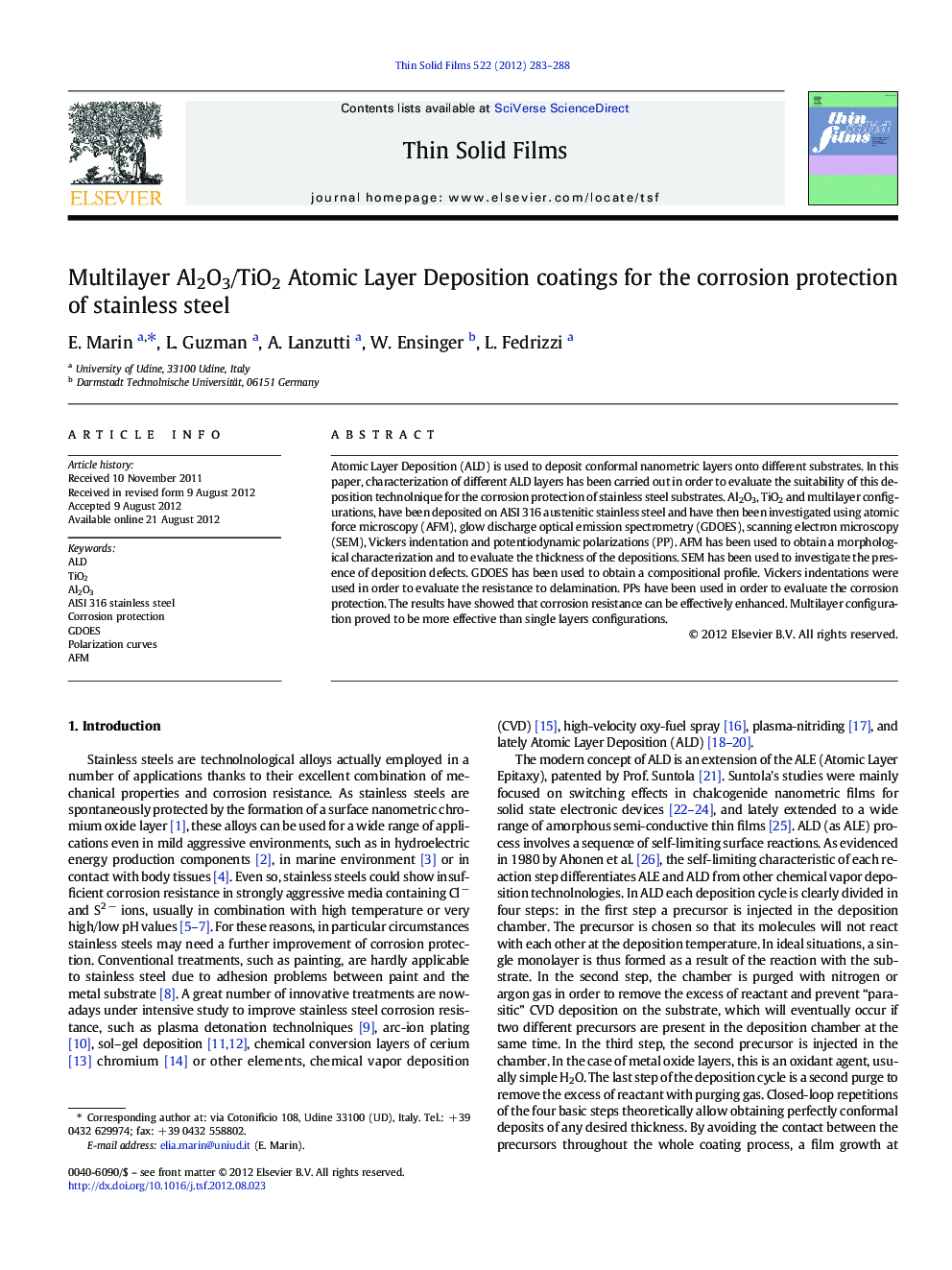| Article ID | Journal | Published Year | Pages | File Type |
|---|---|---|---|---|
| 1666656 | Thin Solid Films | 2012 | 6 Pages |
Atomic Layer Deposition (ALD) is used to deposit conformal nanometric layers onto different substrates. In this paper, characterization of different ALD layers has been carried out in order to evaluate the suitability of this deposition technolnique for the corrosion protection of stainless steel substrates. Al2O3, TiO2 and multilayer configurations, have been deposited on AISI 316 austenitic stainless steel and have then been investigated using atomic force microscopy (AFM), glow discharge optical emission spectrometry (GDOES), scanning electron microscopy (SEM), Vickers indentation and potentiodynamic polarizations (PP). AFM has been used to obtain a morphological characterization and to evaluate the thickness of the depositions. SEM has been used to investigate the presence of deposition defects. GDOES has been used to obtain a compositional profile. Vickers indentations were used in order to evaluate the resistance to delamination. PPs have been used in order to evaluate the corrosion protection. The results have showed that corrosion resistance can be effectively enhanced. Multilayer configuration proved to be more effective than single layers configurations.
► Atomic Layer Deposition (ALD) coatings with different thicknesses were tested. ► Glow Discharge Optical Emission Spectroscopy gave in-depth composition profiles. ► Corrosion resistance was strongly enhanced by ALD. ► Coating to substrate adhesion was improved for thin and multilayer coatings. ► Multilayer ALD configurations proved to be more protective than single layers.
